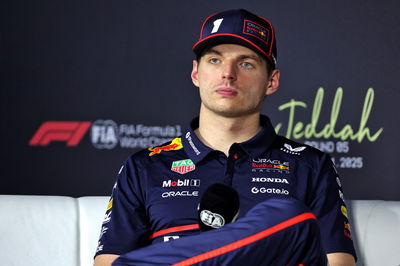Managing tyres key to Sepang success

There may have been complaints about degradation, but managing tyre life and when to stop for replacements proved to be a key element of the Malaysian Grand Prix.
Ferrari's Fernando Alonso used three of Pirelli's four available tyre compounds - wet, intermediate and medium slick - to win the rain-affected race at Sepang and take lead of the F1 drivers' championship against all pre-season expectation. The Scuderia's F2012 still doesn't look like the nicest car to drive, but in conditions that provided something of a leveller for all twelve teams, the Spaniard's ability and Ferrari's tactical nous shone through on a day when other favourites were let down, either by themselves of their teams.
Tyre strategy was also key to ensuring a career-best second place for Sauber's Sergio Perez, who changed from inters to wets after just one lap and then proceeded to make his way up the order as others cottoned on a little too late. As the rain fell harder, Sauber's call turned out to be the foundation of it's best result as a privateer, promoting Perez to third by the time the race was suspended on lap eight because of torrential rain. The restart took place behind the safety car, rules for which obliged all the drivers to fit the full wet tyres, but, as the track dried, the leaders moved onto intermediates and Perez led a race for the first time.
Although he was subsequently passed by Alonso, the Mexican refused to give up, and harried the Ferrari all the way to the line, claiming second place and instantly doubling his career points tally. Unable to make a late stop for fresh rubber, lest he pass up on the result, Perez pressed his harder compound P Zeros to the limit, admitting that the amount of wear ultimately hampered his ability to catch and pass Alonso for the victory.
"I think [fitting the harder compound] was the right call," he insisted, "The degradation was not so bad, so I think it was the right call for us. Obviously I didn't have any new option tyres, [but] the option wasn't working so well for us. I knew Fernando was struggling, especially with the rears, while I was struggling with the fronts. I was getting quite close to him in the fast section, but then I had a lot of understeer and the fronts were already degrading. I was just thinking where I was going to save some KERS and then I just touched the kerb and ran wide and it was over...."
Even before the red flag came out, there were already a variety of tyre strategies in play. HRT's decision to start on the full wet tyre boosted Narain Karthikeyan to an unlikely tenth overall when the race was suspended - the first time that the young Spanish team has finished a lap in the points. By contrast, Toro Rosso's Jean-Eric Vergne remained on the intermediate tyre until the red flag, proving the adaptability of Pirelli's green-accented Cinturato tyre by hanging onto seventh place despite huge quantities of spray and standing water. Marussia also found itself running in the points, thanks to eighth place for rookie Charles Pic shortly after the re-start.
Toro Rosso's Daniel Ricciardo was the first to make the move to full slicks, but Alonso wasn't far behind once the advantages became clear, although he admits that it had been a tougher choice to make than outsiders may have imagined.
"It was a very difficult decision because, as I said before, we just wanted to do the same as other people behind us," he explained, "It was not the time for us to take risks because we were leading the race, so it was difficult conditions because, as you said, the track was ready for dry tyres, they were doing quick times, but the forecast said rain in the next five minutes - if you put on dry tyres and then it rains, you lose everything.
"I think [Jenson] Button or someone close to us put on dries, so it was time to make the decision. We pitted and then, once Lewis [Hamilton] and Sergio pitted as well, we were happy because, if the rain came at that moment, we were all in the same condition again. We only had doubts for one lap."
Pirelli's motorsport director Paul Hembery praised the drivers for their efforts in the conditions - Romain Grosjean was the only driver to retire through an off while on his way to the pits for full wets a couple of laps after Perez had taken the same decision - as well as the tyre company's technicians for the development of this year's compounds.
"This race had echoes of Canada last year, which was also suspended due to rain," he noted, "Once more, that created an intriguing set of circumstances and some stand-out performances, such as Alonso and Perez at the front, who were the class of the field.
"After the re-start, it was important for the drivers to look after the intermediates - which showed great versatility in very mixed conditions - in order to keep them within their operating temperature range. The top two finishers adopted a completely different tyre strategy, with Alonso on the medium tyre and Perez on the hard tyre in the final stint, which shows how our decision to close up the performance gaps between the compounds has led to even closer racing."
For round three of the 2012 season, in China, the field will revert to the soft and medium compound tyres last seen just over a week ago at the Australian GP.










